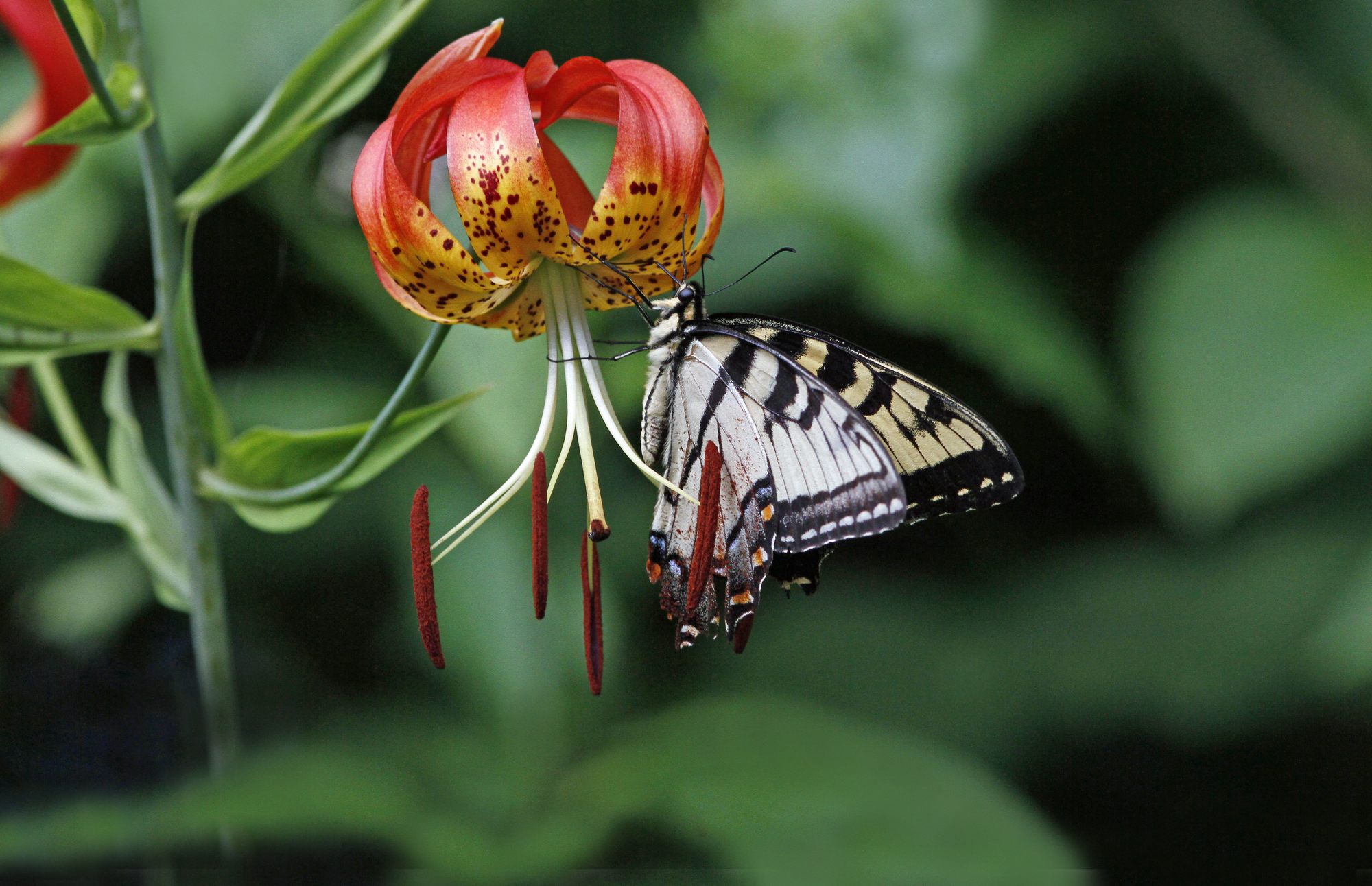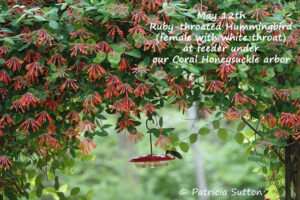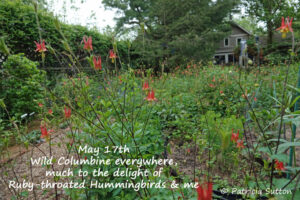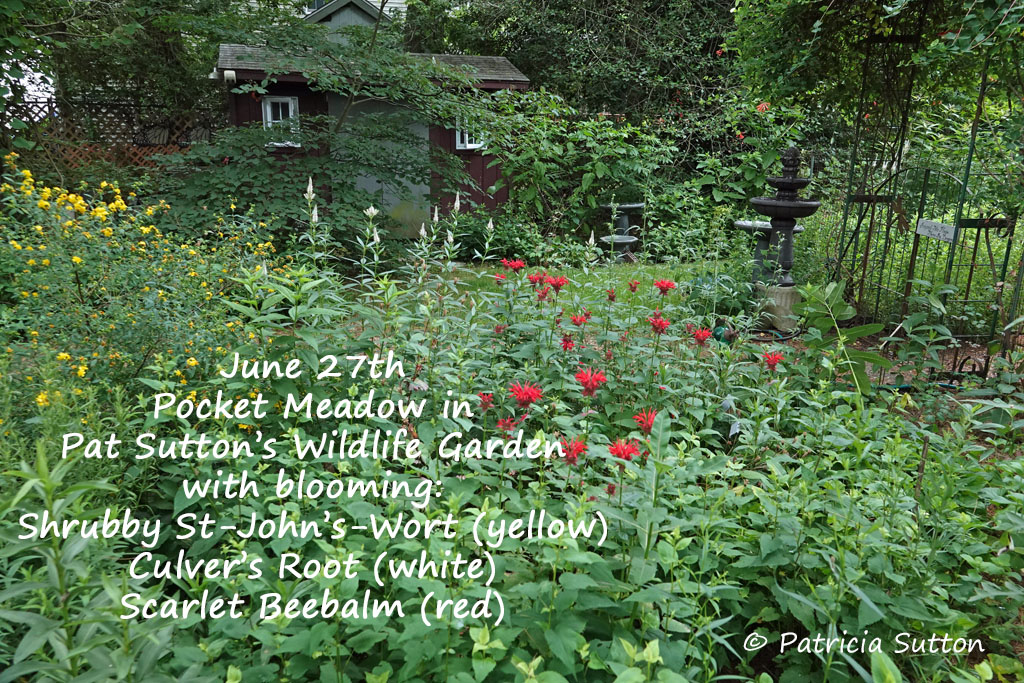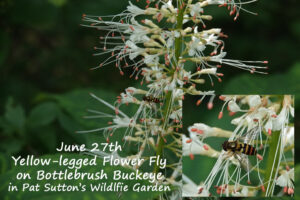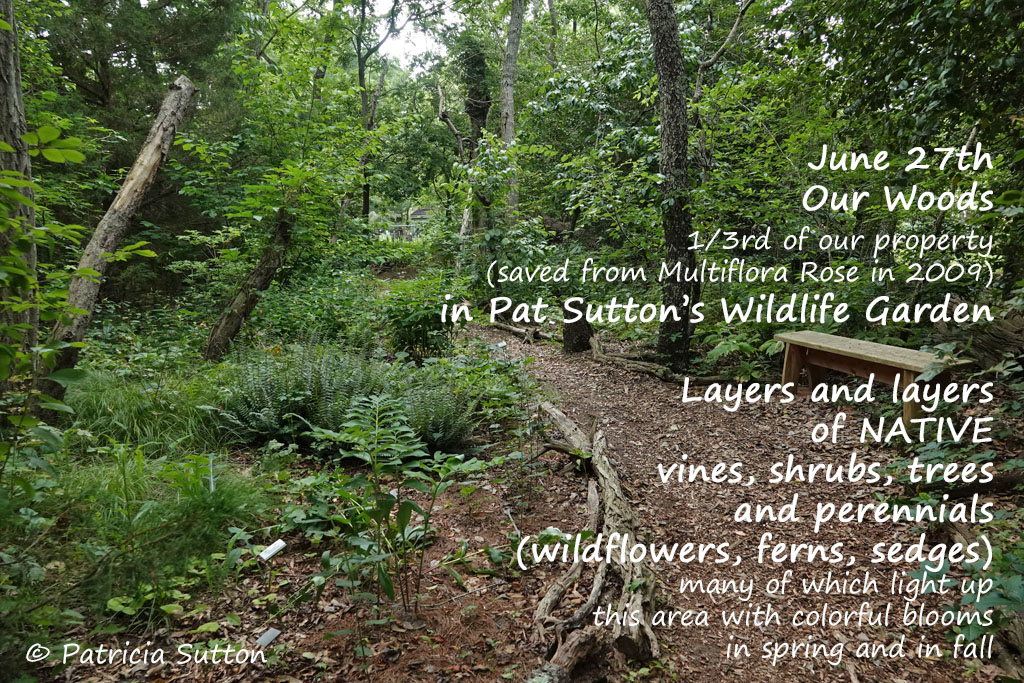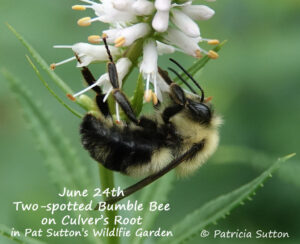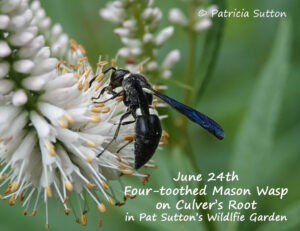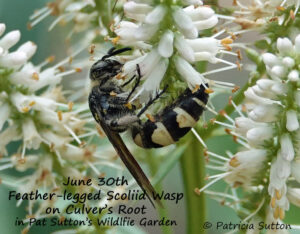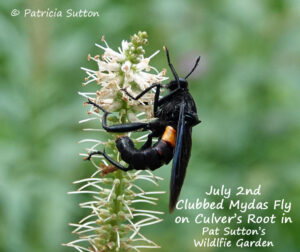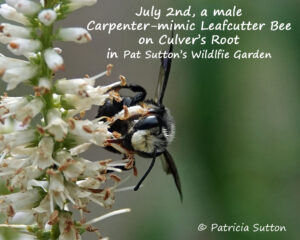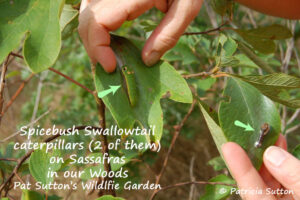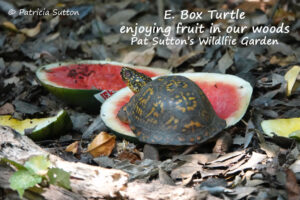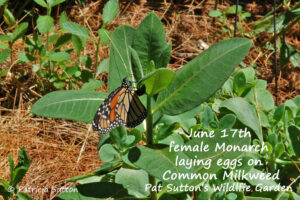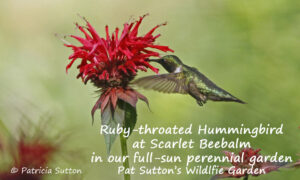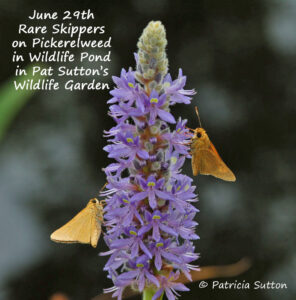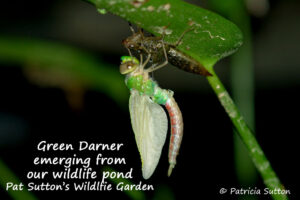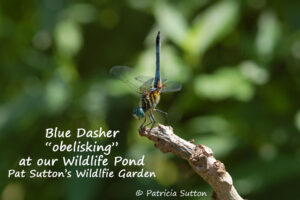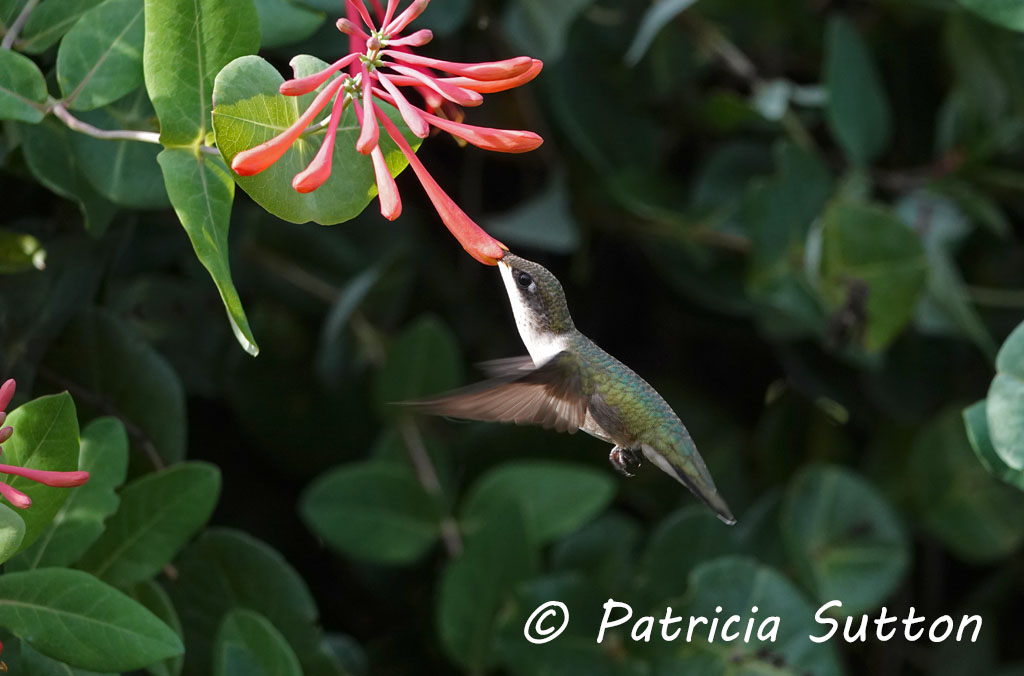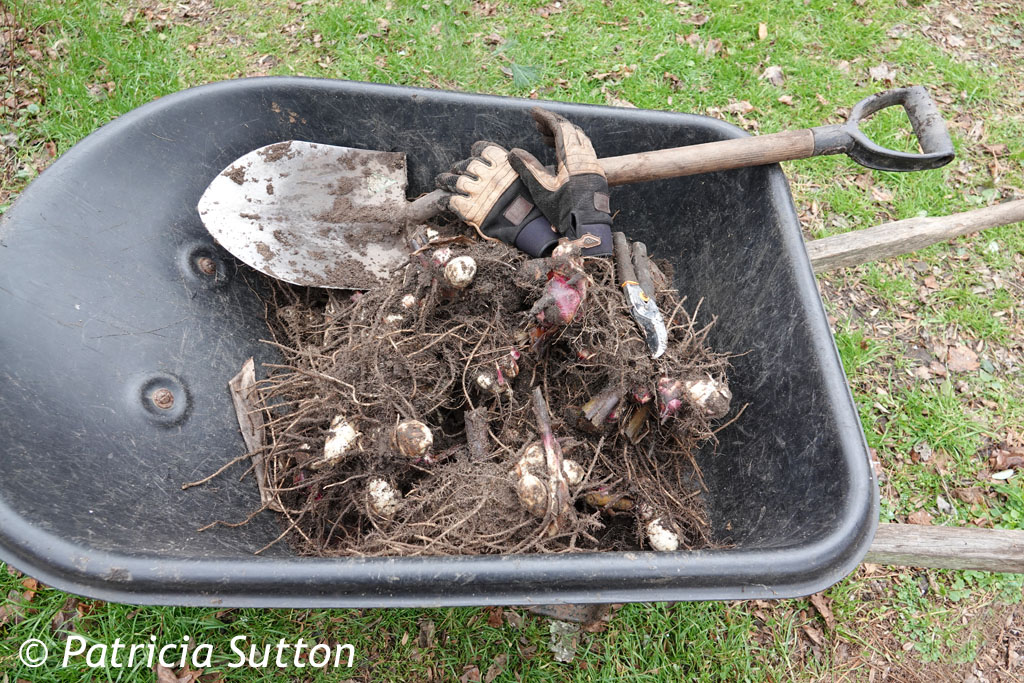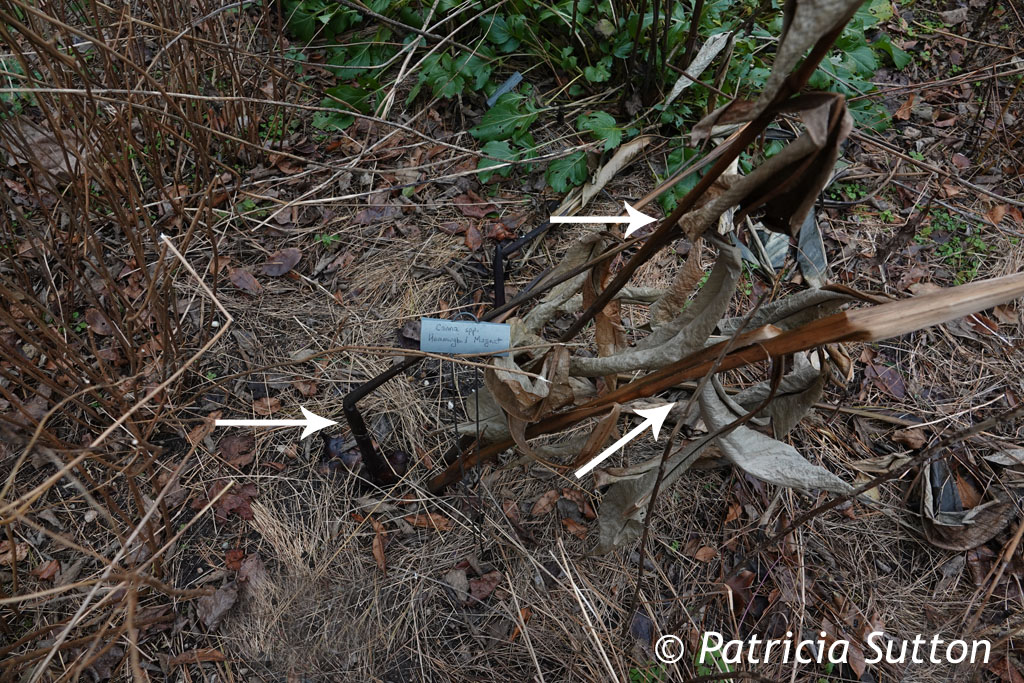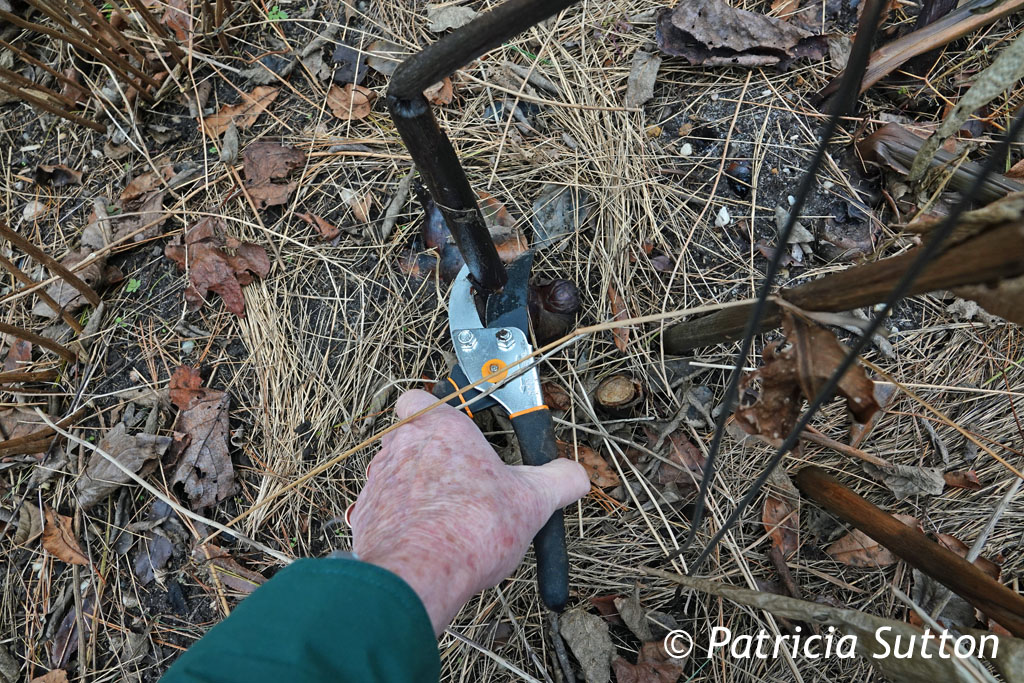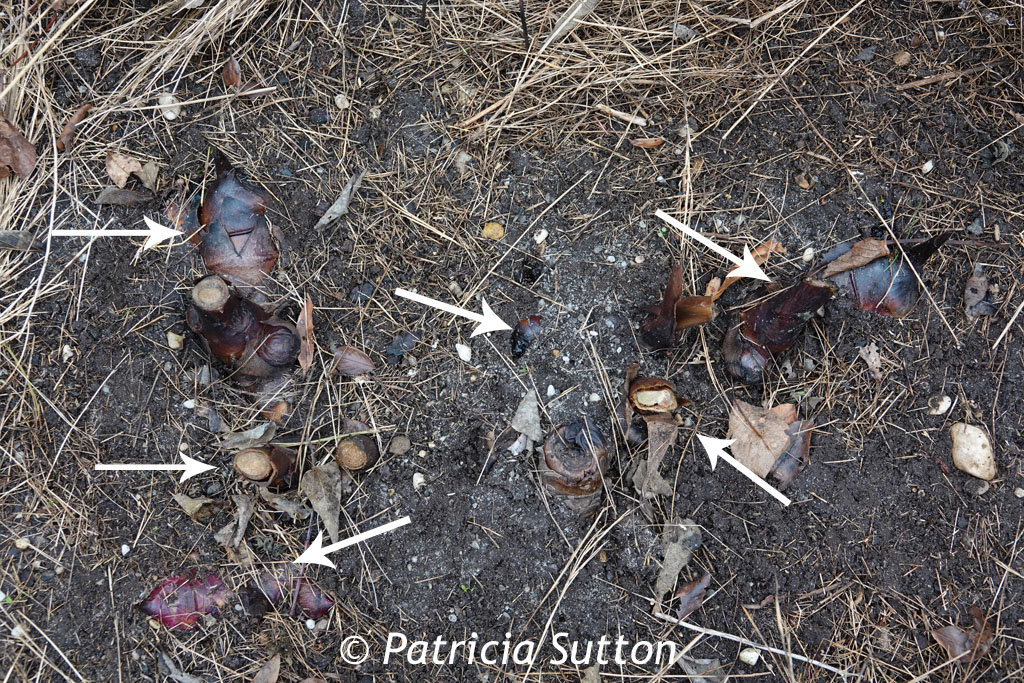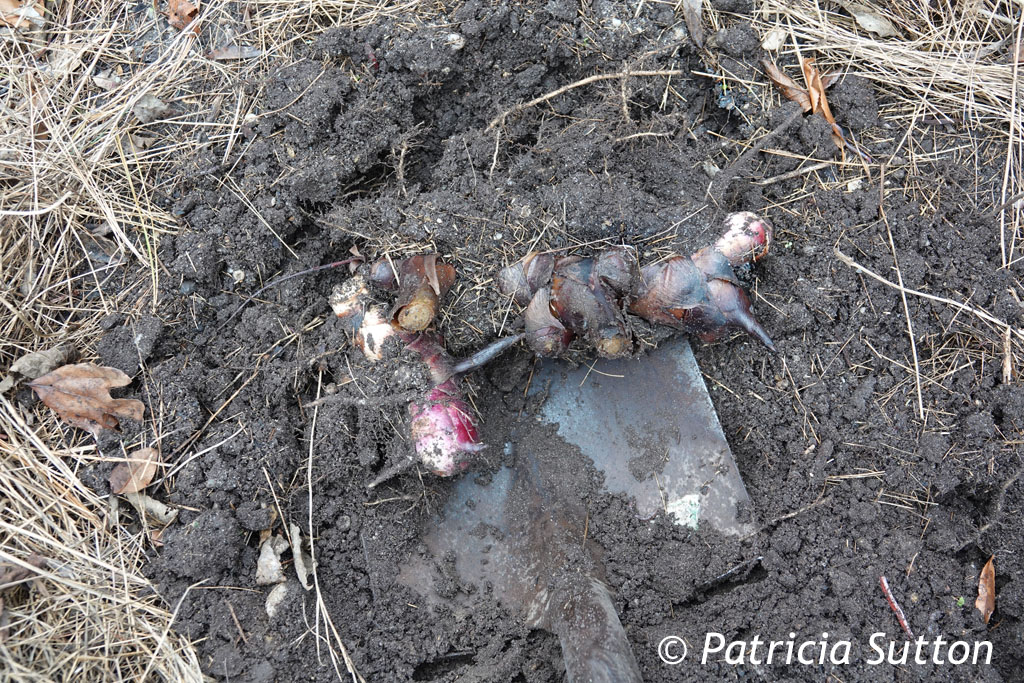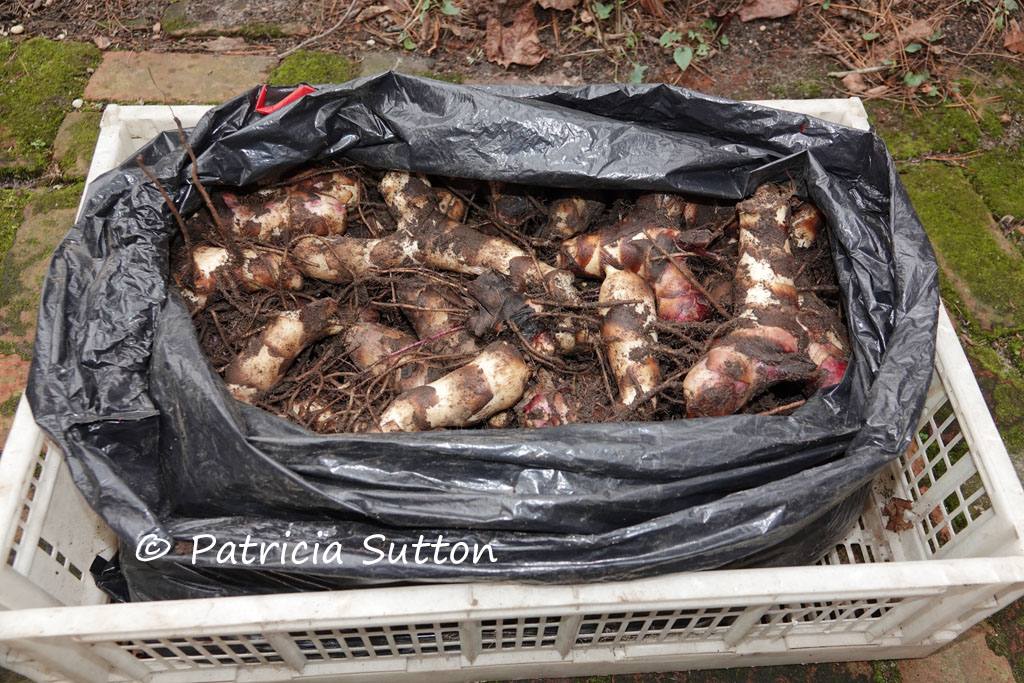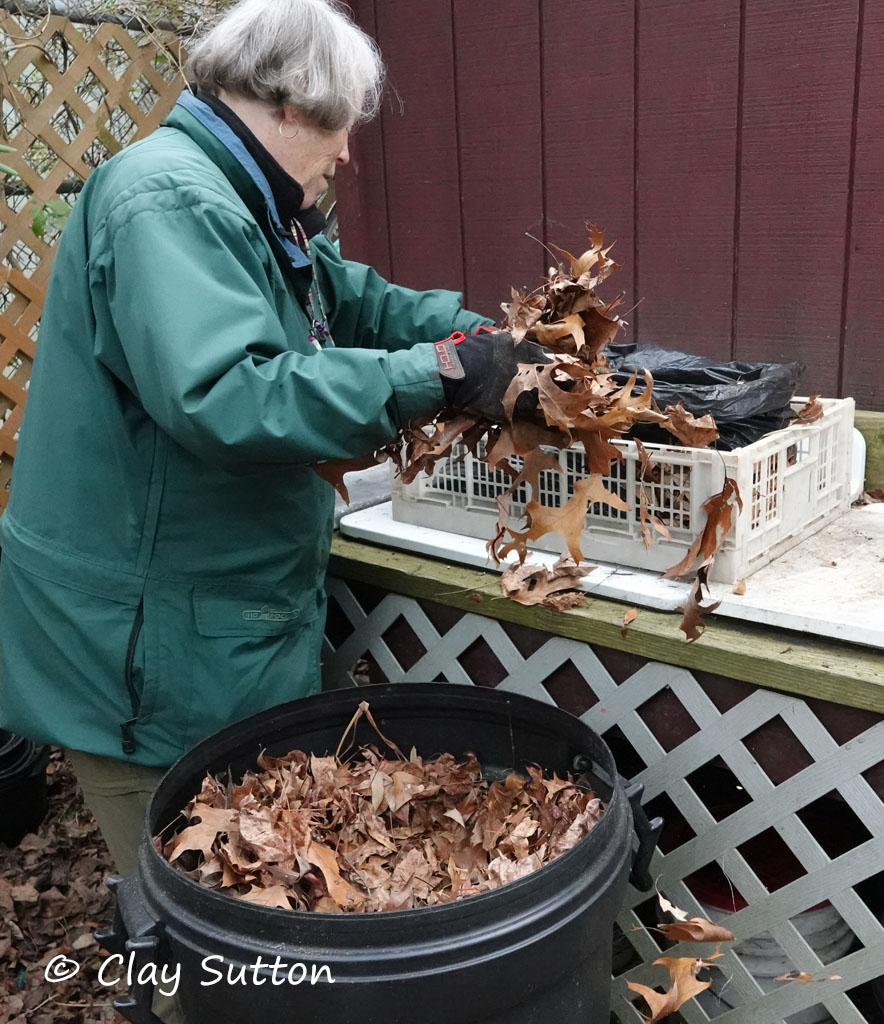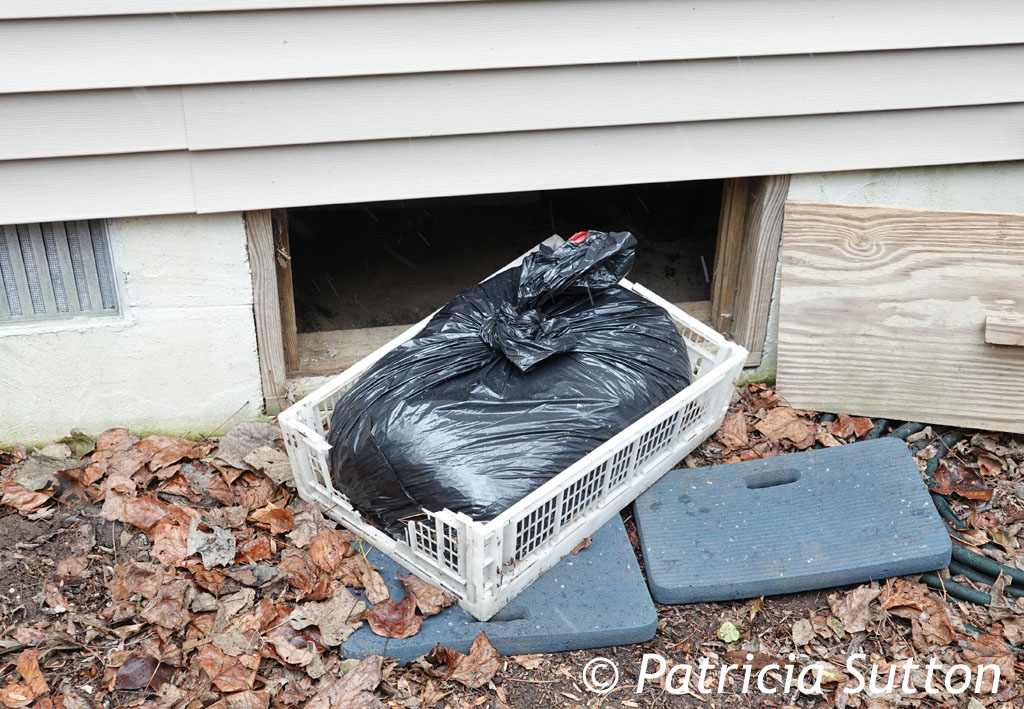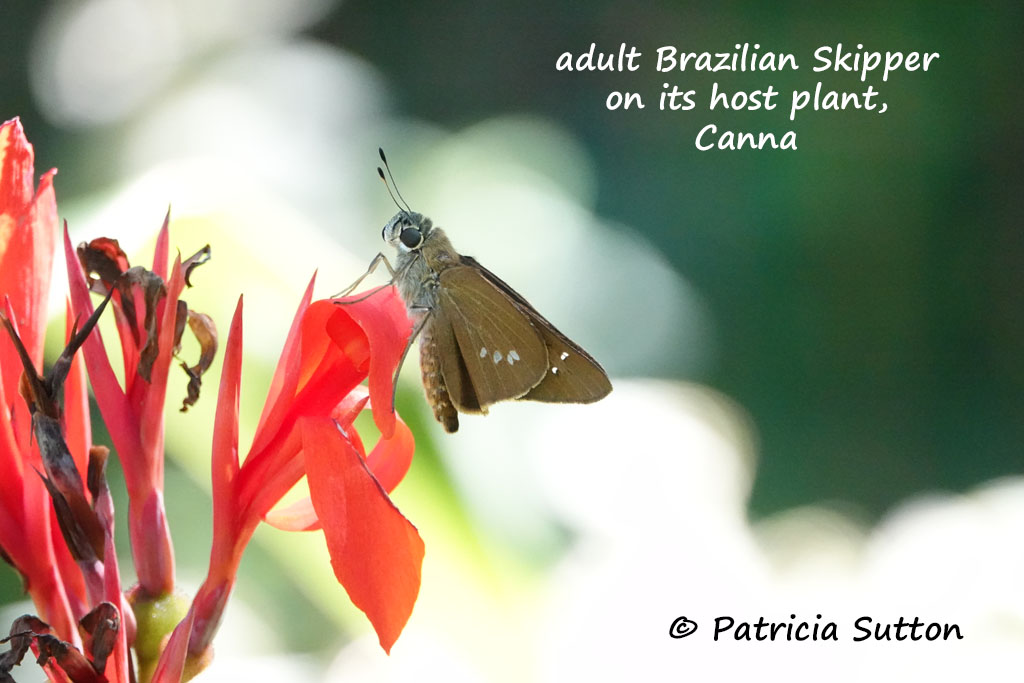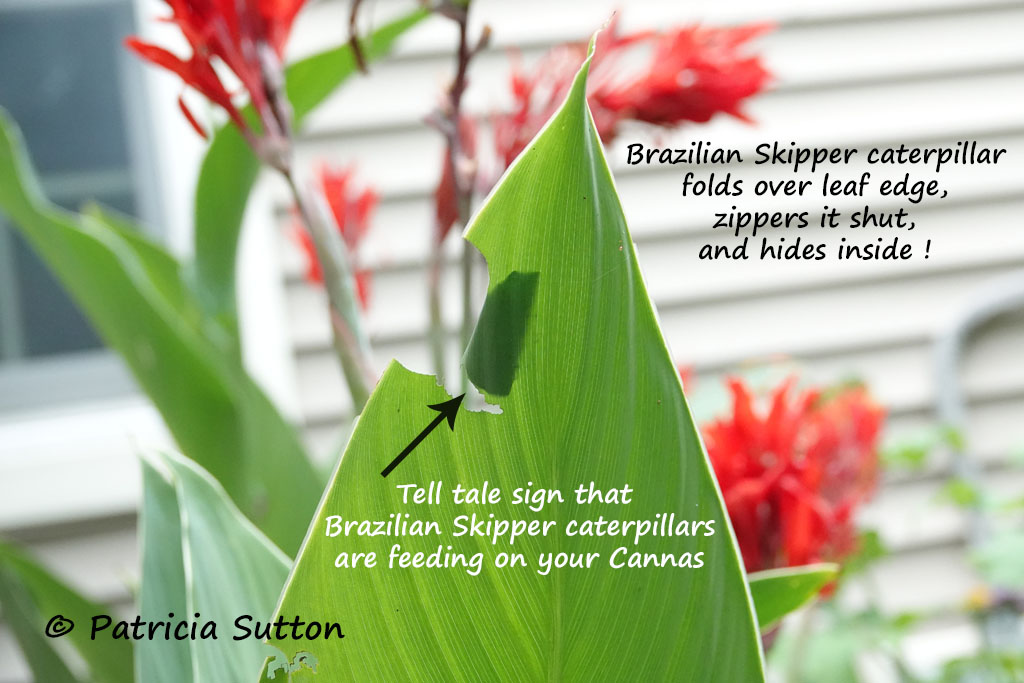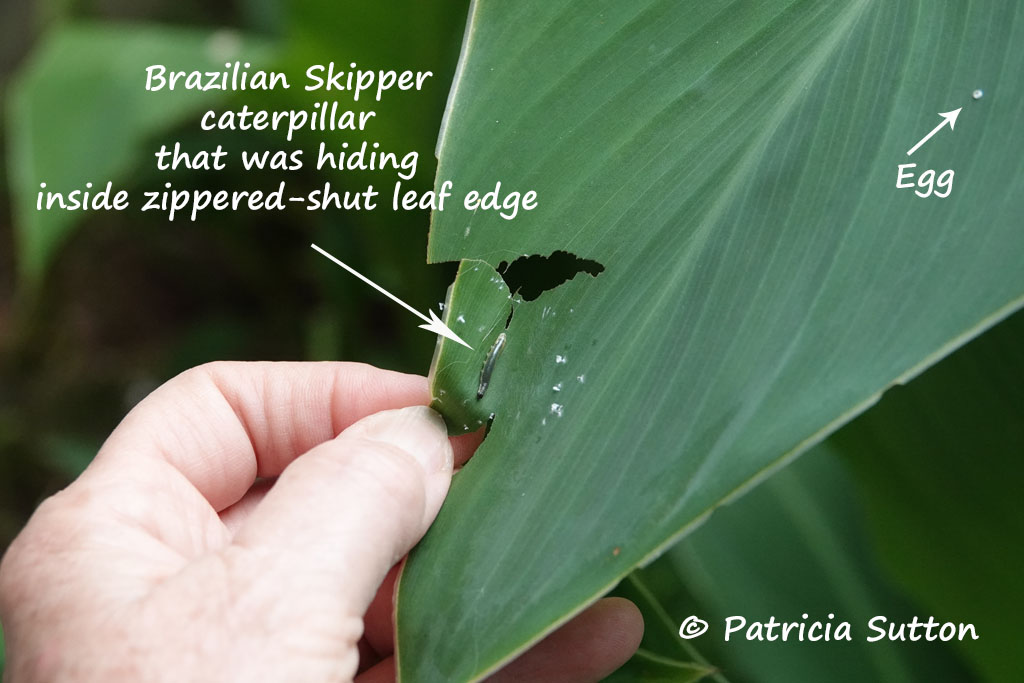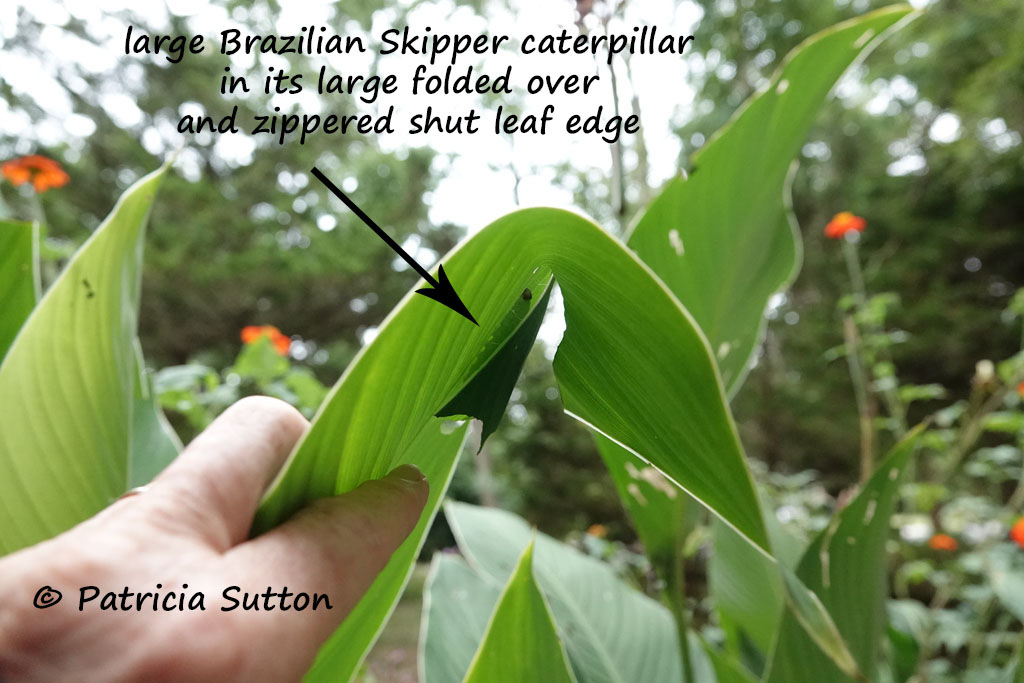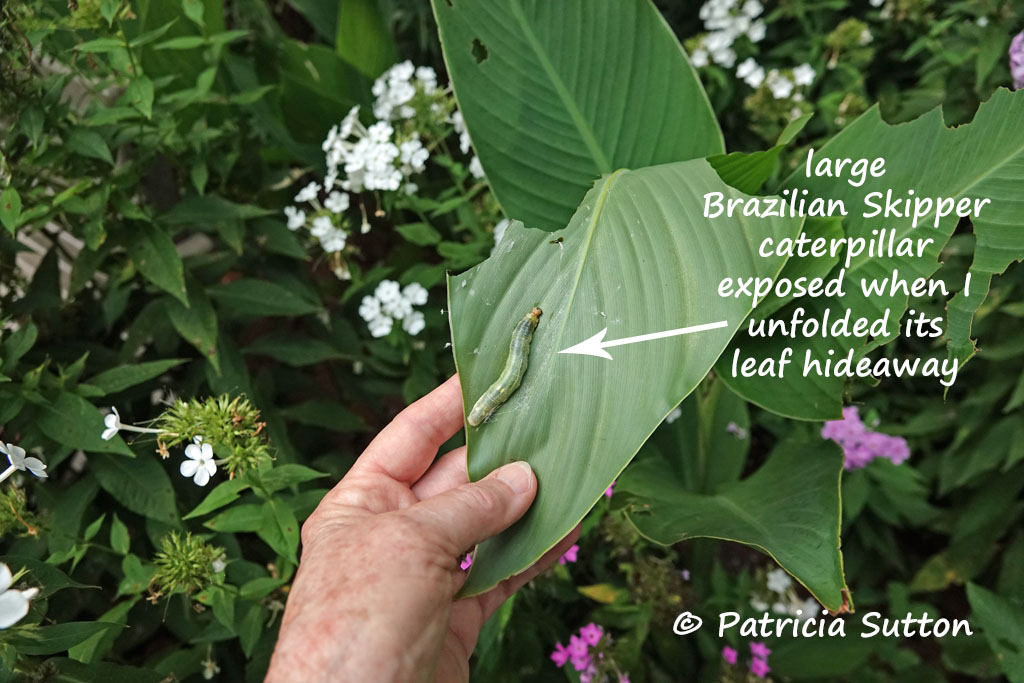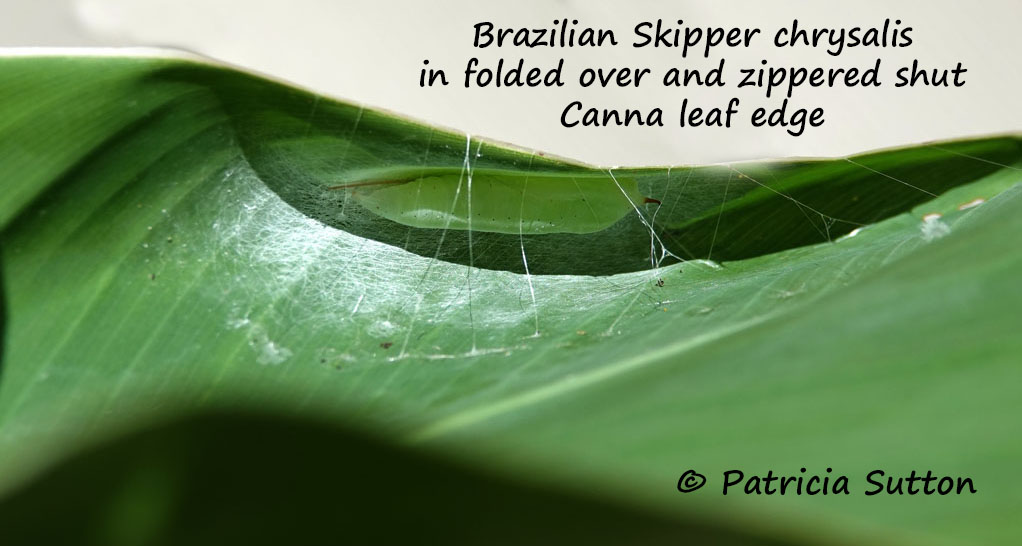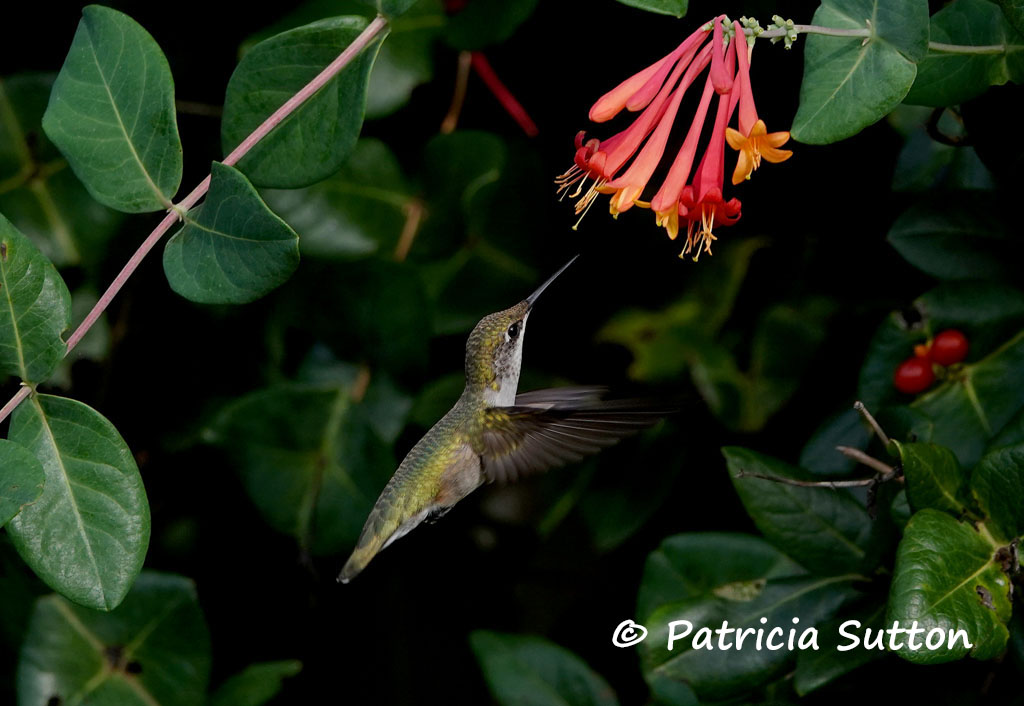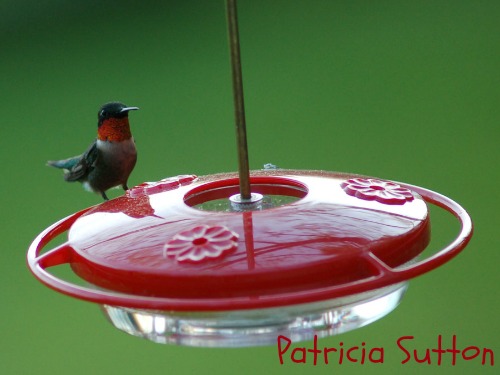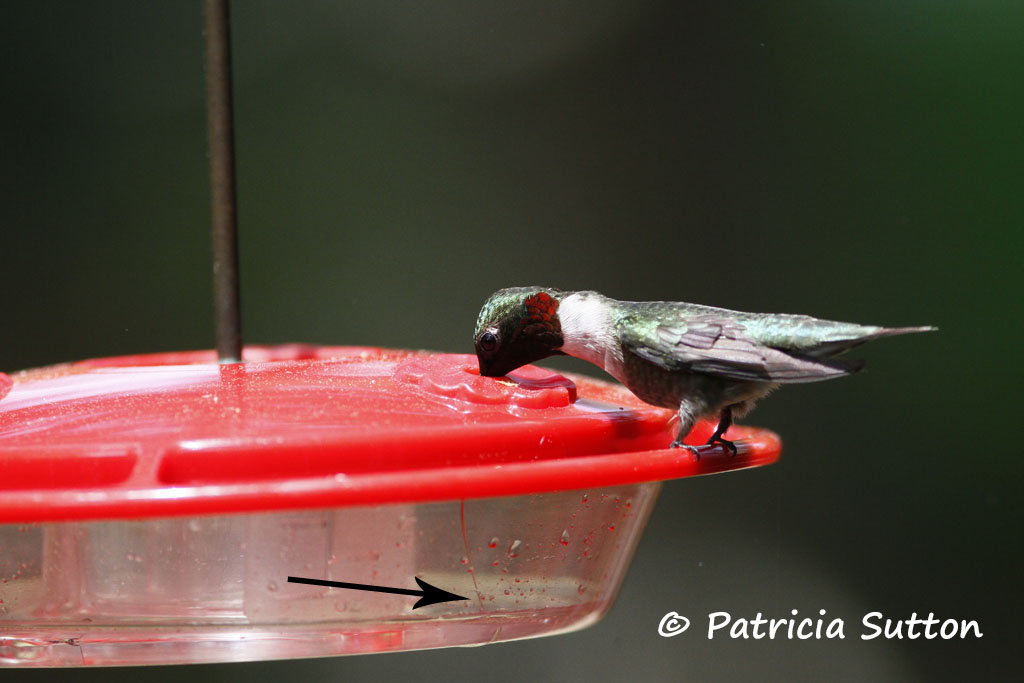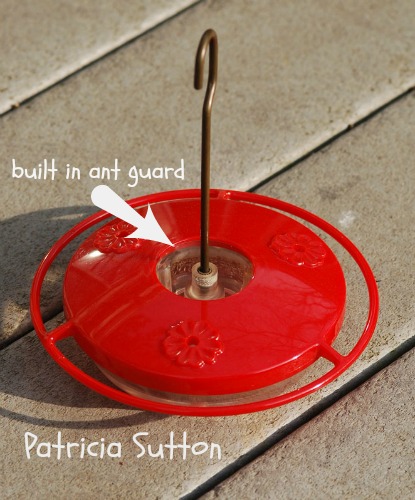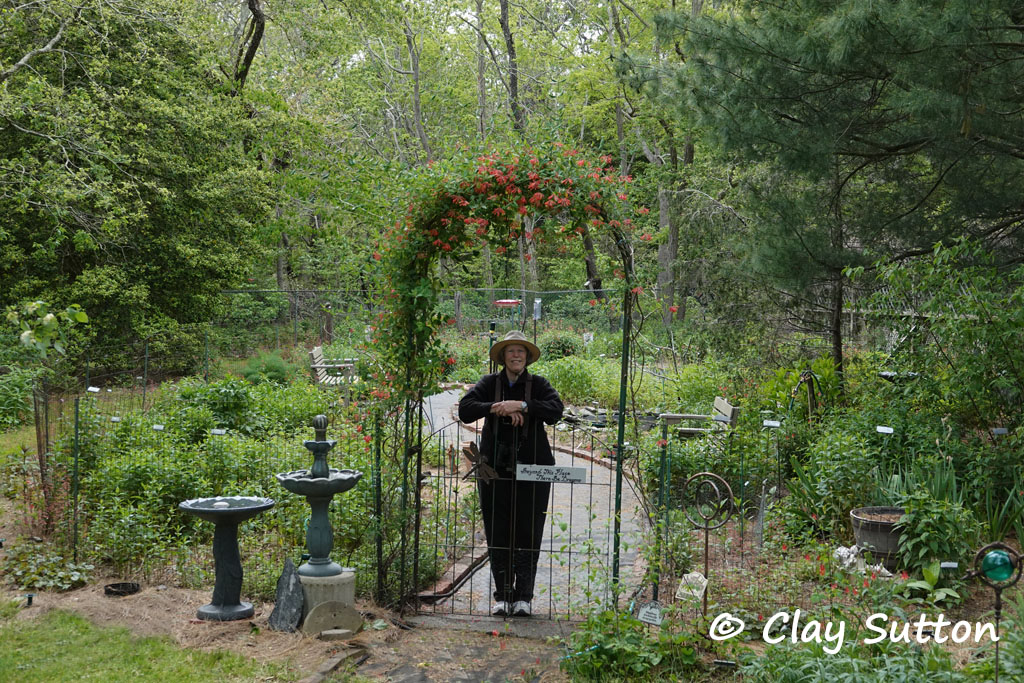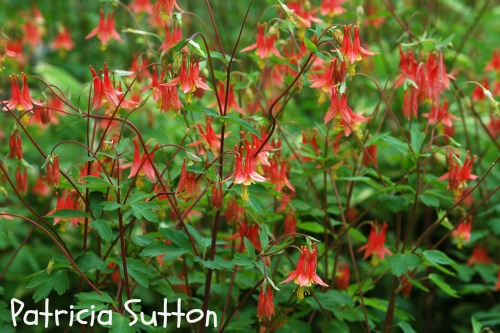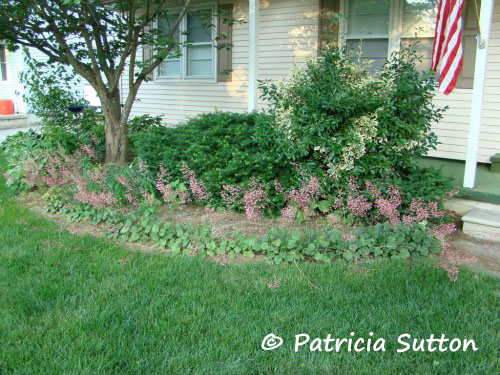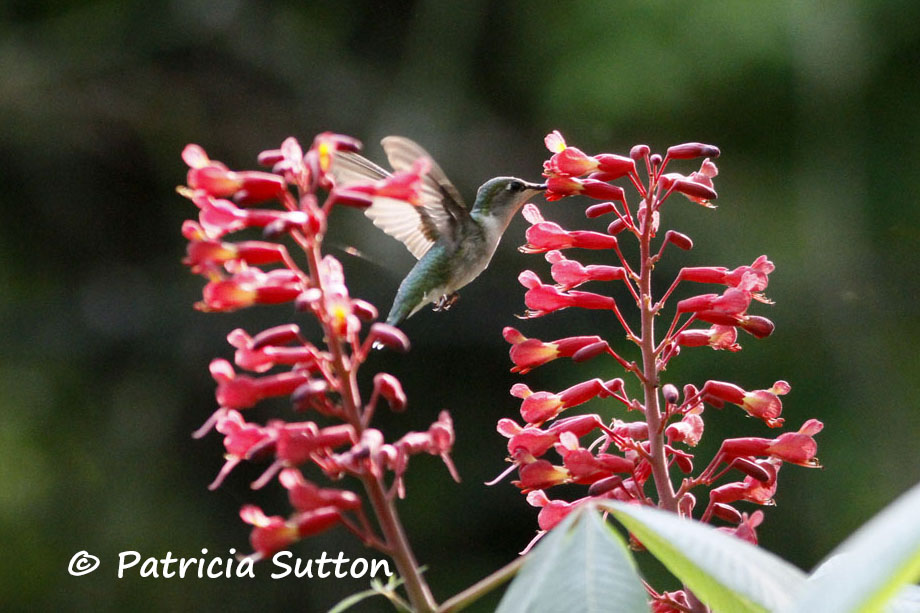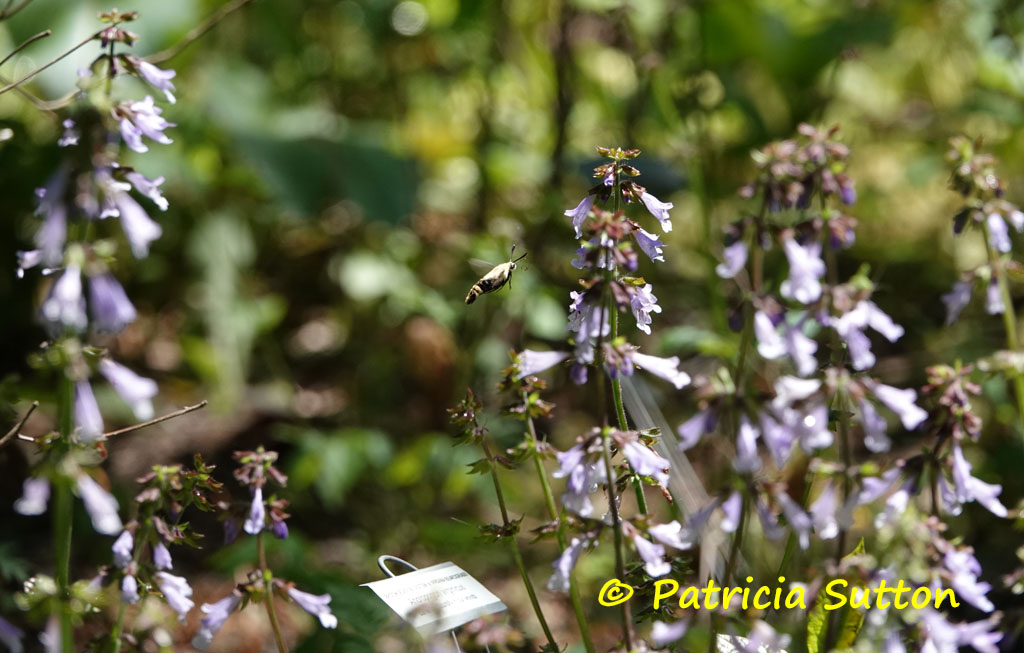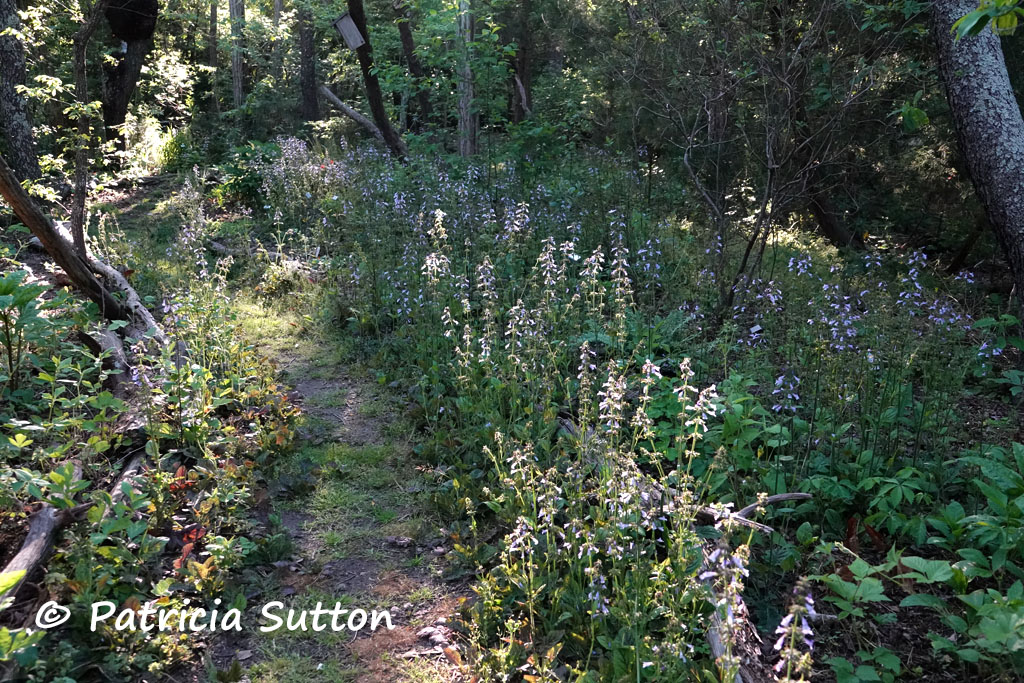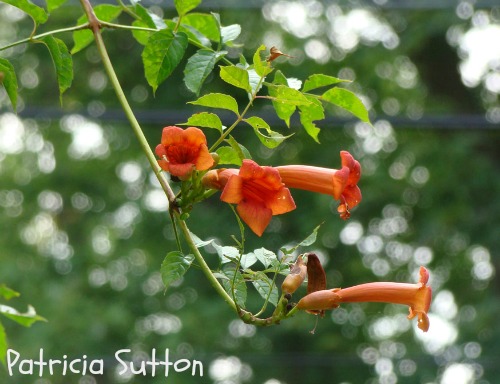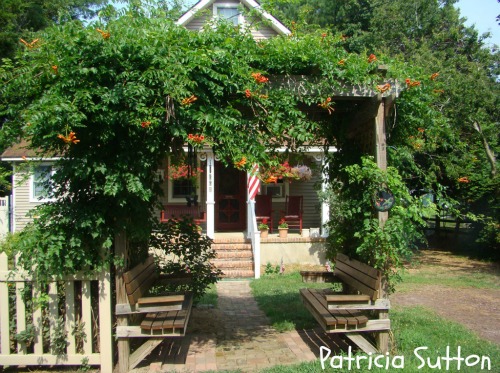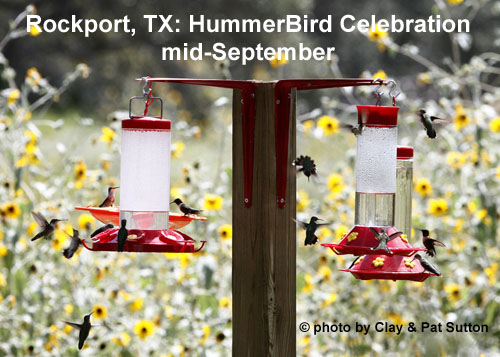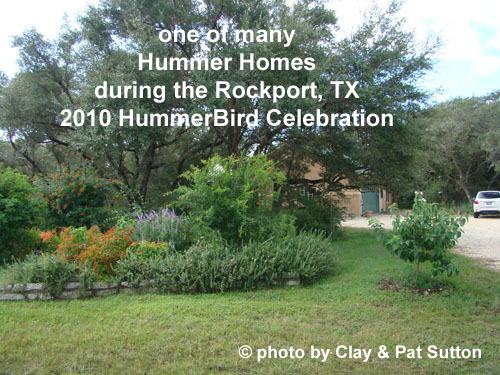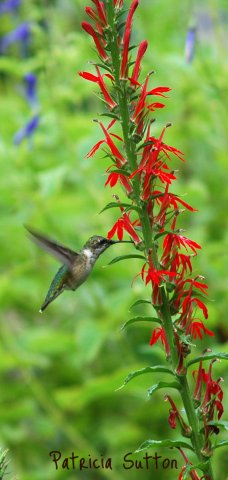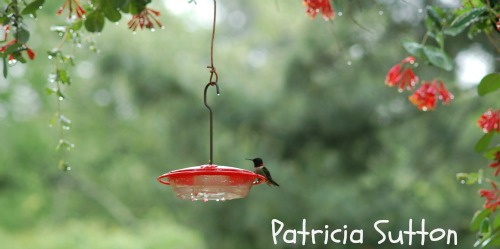JUNE 9, 2024, UPDATE: As I was writing this post on June 4th we were starting to see Ruby-throated Hummingbirds trickle back to our feeders. While sitting on our screened back porch the evening of June 2nd Clay had a female visiting a nearby feeder regularly. I had both males and females hovering outside my office window (where I normally have a feeder hanging, but hadn’t hung one yet). On June 5th I hung that feeder and enjoyed a steady procession of hummingbirds (plus their buzzing wings distracted me). By June 7th some favorite feeders were emptying in two days. Sure enough, Japanese Honeysuckle was DONE! The garden is full of bugs for hummingbirds, but June is a relatively quiet time in my garden for hummingbird nectar plants, so feeders are key! As of June 9th, Coral Honeysuckle is no longer covered in blooms, but will continue to bloom sparsely until the frost. Lyre-leaved Sage, Wild Columbine, and Red Buckeye are all done (and in seed). Foxglove Beardtongue is waning. I can’t wait until the late June/early July hummingbird favorites bloom: Red Bee Balm, Wild Bergamot, Blazing Star, Trumpet Creeper, and many other nectar-rich & insect-rich natives!
Originally written on June 4, 2024
This past spring was one of our best springs for Ruby-throated Hummingbirds (I’ve peppered this post with photos from spring 2024). I’ll quantify that in a bit.
I hung our feeders on April 16, 2024, a little later than usual. That evening at 5:04 p.m. the first one appeared. In following days and weeks they were daily visitors to our five feeders, which are scattered around the yard so returning females can feed in peace and be more inclined to nest in our yard. Each day we witnessed chases, and a female came in to drink and bath several times at our fountain.
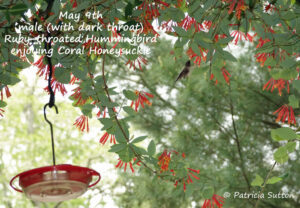 They were drawn to all the spring-blooming goodies I’ve planted to attract them (Lyre-leaved Sage, Wild Columbine, Coral Honeysuckle, Red Buckeye, Coral Bells, blueberries, and Pinxterbloom Azalea). Since their diet is also made up of soft-bodied insects (the protein they need), they find those “a plenty” in our half-acre of native plants.
They were drawn to all the spring-blooming goodies I’ve planted to attract them (Lyre-leaved Sage, Wild Columbine, Coral Honeysuckle, Red Buckeye, Coral Bells, blueberries, and Pinxterbloom Azalea). Since their diet is also made up of soft-bodied insects (the protein they need), they find those “a plenty” in our half-acre of native plants.
By early May a few of our feeders were being emptied of their 2 ounces in 2 days. So, after washing these feeders (which I do every 7 days or sooner if the solution turns cloudy), I refilled them with 4 ounces of solution (instead of my normal 2 ounces for slow periods). Those feeders were also emptied in 2 days. Hmmmmm! This was unlike any spring we’ve experienced when 2 ounces per feeder easily lasts a week. This rather intense and steady Ruby-throated Hummingbird action lasted until the evening of May 18, 2024. Then they were gone, or so it seemed.
The next day I looked around and, sure enough, Japanese Honeysuckle had just begun to bloom, right on schedule. Each mid-May through mid-June Ruby-throated Hummingbird sightings drop off abruptly. Many assume that they’ve left, but in fact they are feeding on blooming Japanese Honeysuckle instead.
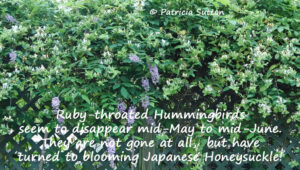 Tonight while sitting on our screened porch, Clay witnessed a female Ruby-throated Hummingbird come repeatedly to the feeder hanging from our back porch. Maybe she has young already. As I sit here on this cool June 3rd evening, the sweet scent of Japanese Honeysuckle drifts in my open window. Yes it is highly invasive, and we’ve removed it and are always on the lookout for seedlings in our woods and elsewhere on our property. But a mass of it covers the chain link fence that surrounds our backyard. Because it grows up and over the chain link fence from each of our neighbors’ yards (to either side), we let it be. It is too mighty a task to remove it.
Tonight while sitting on our screened porch, Clay witnessed a female Ruby-throated Hummingbird come repeatedly to the feeder hanging from our back porch. Maybe she has young already. As I sit here on this cool June 3rd evening, the sweet scent of Japanese Honeysuckle drifts in my open window. Yes it is highly invasive, and we’ve removed it and are always on the lookout for seedlings in our woods and elsewhere on our property. But a mass of it covers the chain link fence that surrounds our backyard. Because it grows up and over the chain link fence from each of our neighbors’ yards (to either side), we let it be. It is too mighty a task to remove it.
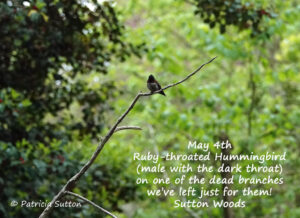 We have a few more weeks of infrequent Ruby-throated Hummingbird sightings. Why? Because they will continue to feed instead on Japanese Honeysuckle as long as it is blooming (@ mid-May – mid-June). As a long-time naturalist and wildlife gardener, I’ve shared this observation/fact in my Hummingbird Fact Sheet for over 30 years now (point 5 under “Feeder Maintainance,”) but still people are caught by surprise when activity drops way off.
We have a few more weeks of infrequent Ruby-throated Hummingbird sightings. Why? Because they will continue to feed instead on Japanese Honeysuckle as long as it is blooming (@ mid-May – mid-June). As a long-time naturalist and wildlife gardener, I’ve shared this observation/fact in my Hummingbird Fact Sheet for over 30 years now (point 5 under “Feeder Maintainance,”) but still people are caught by surprise when activity drops way off.
 But they’ll be back, so be sure to keep your feeders well maintained with fresh solution. And be sure to provide native nectar plants they are drawn to, like Foxglove Beardtongue, a great native perennial during the quiet bloom period from late May to mid-June.
But they’ll be back, so be sure to keep your feeders well maintained with fresh solution. And be sure to provide native nectar plants they are drawn to, like Foxglove Beardtongue, a great native perennial during the quiet bloom period from late May to mid-June.
If any of your neighbors are swayed to hire one of the Mosquito and Tick Removal companies, speak to them about your hummingbirds and share that the sprays used by these companies impact hummingbirds, the insects they need to feed on, and many, many beneficial insects. Read my post, “Help! A Private Company is Spraying The Neighbor’s Yard for Mosquitoes.” It contains many more details on this topic. And just today, June 4, 2024, there was an excellent article on this topic (“What are Eco-Friendly Ways to Control Backyard Bugs“) from the New York Times climate desk.
Be sure to read my other Hummingbird POSTS:
Ruby-throated Hummingbird — Part One — SPRING ARRIVAL
Ruby-throated Hummingbirds: How to Attract Them
Happy Wildlife Gardening,
Pat
